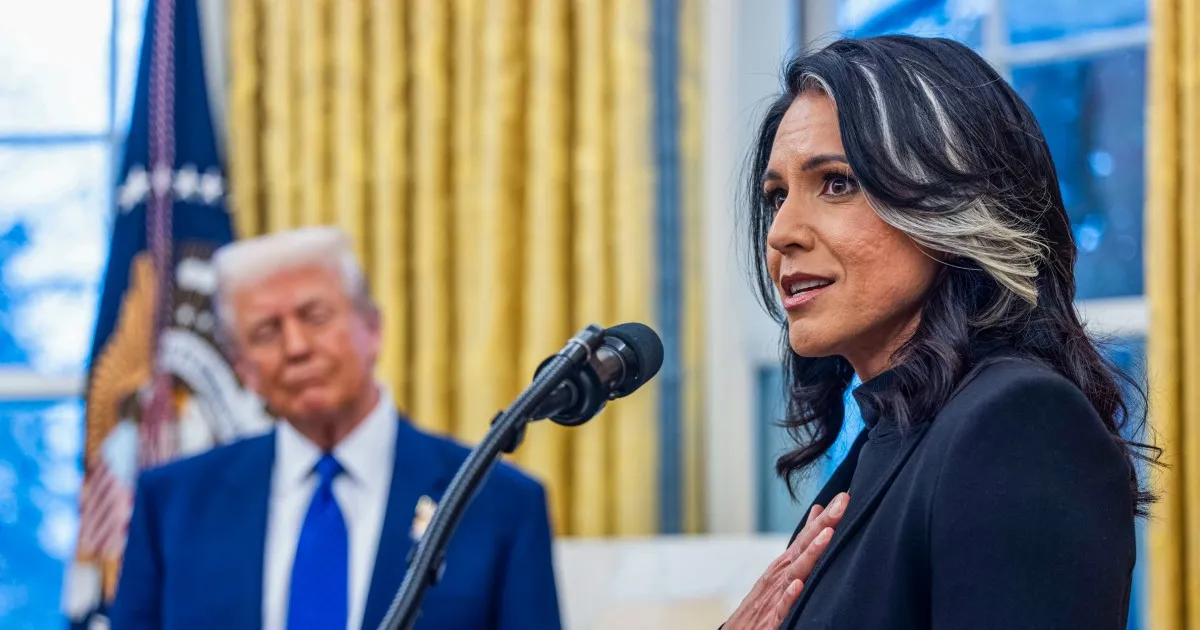
In a significant shift in the way intelligence is presented to the President, Director of National Intelligence Tulsi Gabbard is exploring innovative methods to enhance the routine intelligence briefing known as the President’s Daily Brief (PDB). This initiative aims to align the briefing more closely with President Donald Trump's preferences and consumption habits, as shared by several individuals with insider knowledge of the discussions.
As part of her efforts, Gabbard has reached out to both current and former intelligence officials to gather ideas on how to tailor the PDB to meet Trump’s unique policy interests. One intriguing suggestion under consideration is the development of a video version of the PDB that mimics the style of a Fox News broadcast. This concept reflects Gabbard's recognition of Trump's preference for consuming information in a less traditional format, which could potentially enhance his trust in the provided material.
Currently, the PDB is delivered as a digital document that combines written text with graphics and images, designed for the President and key members of his Cabinet. The format and content of these briefings are crucial as they directly influence presidential decision-making processes. Notably, since taking office, Trump has participated in the PDB briefing only 14 times, averaging less than once a week, which is notably less frequent than his predecessors, including himself during his initial term.
An analysis of public schedules reveals that former President Joe Biden received 90 PDBs during his first year, while Trump had 55, and former President Barack Obama received 63. Sources indicate that Gabbard believes Trump's lower engagement with the PDB may stem from his historically strained relationship with intelligence officials, dating back to accusations of them spying on his 2016 campaign.
Despite potential changes in presentation, insiders affirm that the content of the PDB will remain unchanged. DNI Press Secretary Olivia Coleman has publicly dismissed reports about these discussions as "laughable" and "flat-out false," asserting that there is a bipartisan consensus on the need for reforms within the PDB structure.
Gabbard's discussions also include extensive modifications to the PDB format. One innovative idea discussed involves hiring a producer from Fox News to create a PDB presentation that resonates with Trump's viewing preferences. This could feature graphics, maps, and even animated representations that resemble video game visuals, designed to capture Trump's attention more effectively. The goal is to make the intelligence briefings engaging and accessible to the President, who has been described as less inclined to read lengthy reports.
Historically, U.S. intelligence has utilized various media forms to communicate important information effectively. For example, instructional films narrated by renowned actor Charlton Heston have been used to educate government officials about sensitive topics, demonstrating the flexibility of intelligence presentation methods.
Further discussions suggest that Gabbard may also consider adjusting the PDB’s content to emphasize areas of particular interest to Trump, such as economic and trade issues, while potentially reducing the focus on topics like the war in Ukraine. This tailoring of intelligence to suit the administration's priorities is not uncommon, as exemplified by Biden’s PDB, which included topics like gender and climate change.
As Gabbard leads the charge for reforming the PDB, she faces the challenge of overcoming Trump's skepticism of the intelligence community. Past experiences indicate that Trump prefers verbal briefings and interactive discussions, which could influence how the PDB evolves under Gabbard's leadership.
Amid these potential changes, concerns have been raised regarding the potential politicization of intelligence. Reports indicate that Gabbard's chief of staff, Joe Kent, requested revisions to an intelligence assessment concerning a Venezuelan criminal gang, which could be seen as undermining Trump's immigration policies. This incident has raised alarms among congressional Democrats, who fear that Gabbard's approach may prioritize political alignment over objective intelligence reporting.
As Gabbard continues to navigate these complex dynamics within the intelligence community, the future of the PDB remains uncertain. However, her commitment to reforming the briefing process reflects a broader trend of adapting intelligence delivery to meet the evolving needs of presidential administrations.